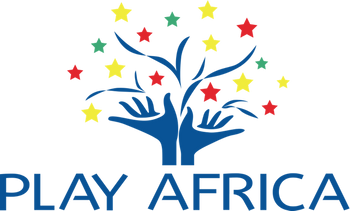Start with an idea!
- Start with an idea for creating an interactive and playful learning environment in the school - this could be anything!
- Decide on a site for this idea - where would it take place when you implement it?
- Gather a team to implement this idea - who will you recruit in your school to make this happen? Which students and which colleagues?
Examples of ideas can be found in the Playful Cities Design Guide accessible here for free: https://www.arup.com/perspectives/publications/research/section/playful-cities-design-guide-play-for-anyone-anywhere
Play Africa participated in a workshop during the development of resource and we love how this resource provides examples of incorporating play in spaces! Some of our favourites interactive play spaces are from page 79-94.
Attend Designing with Children training
- If you've successfully completed your 30 Day Challenge and funding is available, Play Africa will reach out directly to liaise scheduling your training sessions for the 'Designing with Children' program
- The training will be conducted virtually and consist of a total of 6 hours of over two consecutive days every month (resulting in 3hrs per day for 2 days).
- This training will help educators develop their thinking about how to gather children's ideas and get the most of using Play Africa's toolkit in the development of the playful and interactive experience in the school. Some of what will be explored in the training:
1. What is the high-level playful and interactive intervention for the school and how can the Design with Children toolkit enable child-participation in its development and implementation?
2. What is design thinking and how can it empower learners as they participate in problem solving the challenges in their school while creating an engaging and playful learning environment their school?
3. How to plan, adapt and implement an effective design thinking workshop guided by the Designing with Children toolkit?
Implement your own design thinking workshop
- Once you've completed your initial training with Play Africa, it's time to implement your own design thinking workshop adaptation, guided by the Designing with Children approach
- Trained educators will conduct their own design thinking workshop, guided by the toolkit but specifically tailored to their learners. These workshop(s) will aim to achieve the following:
1. To introduce the high-level interactive and playful idea for a specific site in the school to learners while enabling them to further develop the idea
2. To interrogate the site of the intervention and work as a team as they innovate and approach the challenges the site may present with curiosity, empathy, and creativity
3. To encourage learners to unleash their imagination as they ideate and develop prototypes for an interactive and playful space for the site
Synthesize workshop outcomes
- It's now time to synthesize workshop outcomes, plan needs and execute the playscape!
- As you synthesize the outcomes of the design thinking with children workshop(s) and prepare to transform the site, here are some key things to note:
- Ensure children's ideas are strongly reflected in the final project design for the interactive playscape
- Reassess potential artisans, making sure they can execute the project design within the allocated budget
- Plan with your artisan the materials which will work best for your location (consider weather, usage, long term maintenance)
- Ensure that there are ways (even if small) learners can take part in executing the project design
- Plan site maintainance and how to keep the space shared and active. This might include identifying resources for maintenance









 "Welcome to Play Africa's Designing with Children project! Join us in empowering learners to drive positive change by creating interactive and playful learning experiences for South African schools."
- Futhi Mbongwe, Interim Managing Director of Play Africa
"Welcome to Play Africa's Designing with Children project! Join us in empowering learners to drive positive change by creating interactive and playful learning experiences for South African schools."
- Futhi Mbongwe, Interim Managing Director of Play Africa
